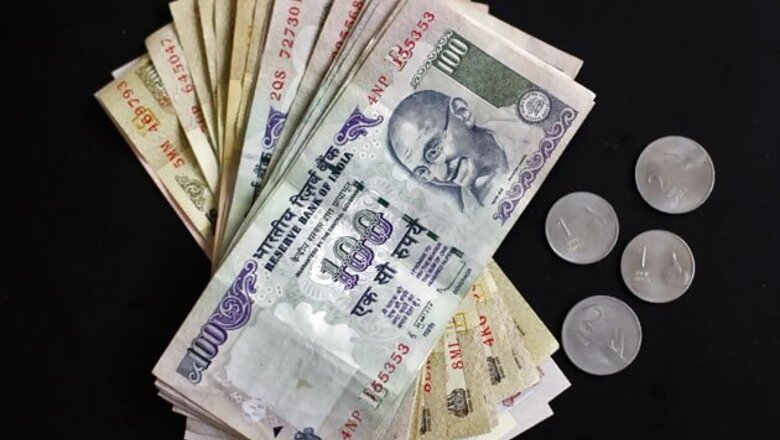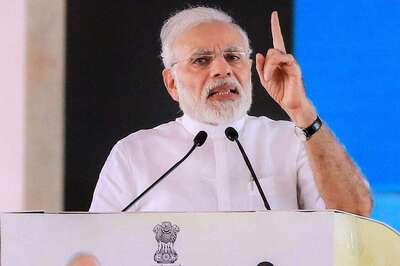
views
Mumbai/Bangalore: India will likely borrow an additional 500 billion rupees for the year ending in March and miss its fiscal deficit target, a Reuters poll showed, raising doubt about the fiscal discipline of a country whose credit ratings are under threat.
India's fiscal deficit is expected to rise to 5.8 per cent of gross domestic product (GDP), higher than the government's target of 5.1 per cent of GDP given in March, according to the poll of 24 economists taken over the past week.
Estimates for the government's additional borrowing for the second half of the fiscal year which started in April ranged between 150 billion to 750 billion rupees.
India is set to unveil its borrowing plans for October-March this week, although the government may delay announcing needing extra borrowing to avoid upsetting markets, and stick to its current target for now, analysts said.
But eventually, the government would have to announce extra borrowing, according to analysts tracking the trajectory of government spending and revenues.
"The market is not expecting any hike immediately. If 500 billion rupees of extra borrowing is announced now, yields may spike by 10-15 basis points," said the chief executive at a primary dealership.
The government and the central bank will meet sometime this week to set its borrowing programme for October-March, in what will be keenly watched by the bond markets and rating agencies for signs of fiscal slippage.
Although major reforms this month, including a hike in subsidised diesel prices, have been cheered by markets, investors remain worried about fiscal discipline.
The government had earlier set its borrowing target for October-March at 2 trillion rupees, as part of its plans to raise 5.7 trillion rupees for the full fiscal year.
However, four months into the year, India's deficit has already hit 51.5 per cent of the full year target, making it likely the government will have to resort to more borrowing.
That is because the government is unlikely to cut spending, especially as it heads to general elections in 2014, while the economy has slowed to a three-year low, denting tax revenues.
"The lack of past expenditure reforms and slower tax revenue generation amid weaker domestic growth will lead to another year of a marked slippage in the fiscal deficit target, in our view," Standard Chartered Bank wrote in a note on Monday, adding the country's fiscal health may come under further rating scrutiny.
Already, the government's subsidy burden is running higher than it had expected, a key factor for India given the country helps consumers pay for a range of commodities including oil, other fuels, and sugar.
Investors were always wary India would not meet its targets given that the government twice increased its borrowing target in the last fiscal year and ended up recording a fiscal deficit of 5.76 per cent versus the initially planned 4.1 per cent.
Finance Minister P Chidambaram has estimated the subsidy bill is likely to hit 2.4 per cent of GDP, up from 1.9 per cent targeted in the federal budget, and has ordered strict monitoring of expenses while ordering spending cuts.
India's deficits, both on the fiscal and the current account sides, were a big factor behind the rupee's fall to a record low in June.
Only four of 17 economists polled by Reuters said they were likely to upgrade their growth forecasts for the current fiscal year based on this month's reforms.
Although the government is looking to reduce its subsidy burden, attract foreign flows and sell stakes in companies, the Reuters poll showed 11 of 17 economists expect India to lose its investment-grade ratings.
Standard & Poor's and Fitch have both placed India's current "BBB-minus" ratings under "negative" outlook.



















Comments
0 comment